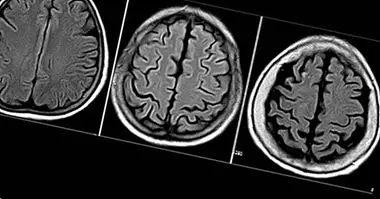Sugar addiction: the disease of the 21st century
Soft drinks, industrial pastries, dairy desserts, ketchup, alcoholic beverages ... All these are frequent foods in our western diet: highly caloric, very appetizing and rich in added sugars. To this list could be added, among many others, the cereals that we consume at breakfast, energy drinks, jams, etc.
The food industry makes use of this element so attractive to the human palate, sugar, to enhance the flavor of all these products, causing in the long run a clear dependence on these processed foods.
Sugar: a pandemic in the shade
The World Health Organization estimates a recommended amount of 25 grams of sugar a day, setting a maximum limit for adults of 50 grams. However, consumption in Western societies far exceeds this limit, standing at 70 grams per day per person in Spain and 126.4 in the United States (Pablos, 2016).
Within these rates only free sugars are included, that is, those added artificially during the processing of food. The natural sugars present, for example, in the fruit, do not constitute a serious danger.
The effects of an irresponsible consumption of sugar
The counterproductive effects of this high intake of processed sugars are not confined to simple caries, but go much further. While in developing countries the main cause of death are infectious diseases, in the developed countries the great majority of deaths are due to non-communicable diseases. Among these, the vast majority are aggravated by lifestyle and diet; among them are cardiovascular diseases (stroke, myocardial infarction, etc.) and metabolic diseases, that is, diabetes mellitus, obesity, atherosclerosis, hyperlipaemia and hypertension. The ingestion of the aforementioned foods and, consequently, the accumulation of excess fats in the organism, cause these diseases to worsen (Álvarez-Campillo, 2009).
Faced with this Western epidemic of sugar addiction, countries such as the United Kingdom propose to tax the consumption of sugary soft drinks with taxes of up to 20%. Others, such as Hungary, set this rate according to the amount of sugar, fat and salt contained in the food. This measure caused many manufacturers to reduce these ingredients to avoid paying more taxes, resulting in positive changes in the diet of consumers (Galindo, 2016).
If it tastes so good, why does it feel so bad?
In his book The Obese Monkey (2010), José Enrique Campillo Álvarez answers this question from the point of view of Darwinian medicine. This medical approach, also called evolutionary medicine, study diseases from the context of biological evolution . Starting from the fact that the current "design" of the human being is the result of millions of years of evolution and genetic variation, the disease would take place when it does not adapt to the demands of the environment.
Our ancestors evolved in contexts in which the shortage of food was chronic, also requiring a large amount of physical exercise to obtain scarce food. This situation, which occurred over millions of years, caused that, through natural selection, survive those individuals who had the genetic adaptations necessary to make the most of periods of abundance and resist those of scarcity. Among these adaptations are those that favor metabolic processes that help the accumulation of fats after feeding. Also those that favor that these deposits of lipids are maintained when food is scarce.
The abundance of food, the first step towards denaturation
However, all this changed from the development of agriculture and livestock, approximately, 15,000 years ago. In contrast to what happened with the shortages suffered by our ancestors, with the development of these technologies there was an abundance that had not been seen since our great grandparents the Ardipithecus ramidus lived in lush jungles, full of fruits at your fingertips. This technological development has reached the point mentioned at the beginning of the article.
Today, without spending hardly any energy, we can ingest large amounts of food despite the fact that in biology there is a universal law that states that every living being needs to "pay" a certain amount of energy through physical activity in order to take something to the mouth. This is the ideal setting for the sugar addiction to appear , because its availability has increased, but the same has not happened with our biological design.
According to Campillo, it seems that, despite what the popular saying holds, we are not what we eat, but rather we are a product of what our ancestors ate . After the latest scientific research, it is also suspected that the human body requires a certain amount of physical exercise to achieve normal functioning and maintain a homeostatic balance.
For example, contrary to the general belief that the athletes' hearts hypertrophy as a result of high physical exercise, it would be the organ of the rest of the population that has not acquired the ideal size. Therefore, having our body a design that does not adapt to the circumstances of the current environment, there is an internal shock that gives rise to diseases of opulence.
What are the diseases of opulence?
Obesity, type 2 diabetes, hypertension, dyslipidemia and atherosclerosis often go hand in hand , so this set of diseases has been framed within the so-called Metabolic Syndrome linked to sugar addiction. This, in turn, often leads to cardiovascular disease.
A diet with a hypercaloric and unbalanced intake and a sedentary lifestyle could lead, for example, to a progressive accumulation of fat. After eating foods that contain sugars, these are metabolized and transformed into glucose, which would be distributed by the body. When there is an excess of glucose that is not used, it is transformed into fat in adipose tissue. This accumulation can become excessive in the belly area, this central obesity being an important risk factor for the development of cardiovascular diseases.
Type 2 diabetes, whose number of affected will grow to 300 million in 2025, is that which usually appears in adults. It is usually associated with obesity and a sedentary lifestyle. Causes a deficit in the assimilation of sugars in the body, which causes glucose to accumulate in the blood (hyperglycemia) and can not be used as an energy source. Insulin, secreted by the pancreas, is responsible for making glucose enter the cells. People with type 2 diabetes develop insulin resistance, causing these problems. In recent times, its incidence in children and adolescents is increasing due to the abuse of sweets and pastries. The main consequence of type 2 diabetes without treatment is myocardial infarction and other cardiac problems.
The term hyperlipidemia refers to an excess of circulating fat in the bloodstream. Faced with the impossibility of its dissolution in the blood, fats travel through the arteries, favoring the appearance of cholesterol deposits in the walls of these . On the other hand, in atherosclerosis, excessive damaging fats form plaques in the arteries. Upon reaching a point of accumulation in which the blood can no longer circulate, an infarction (if it occurs in the arteries of the heart) or a stroke (in an artery of the brain) will occur, resulting in the death of the tissue that is seen affected by not receiving blood.
Finally, hypertension would also affect adults and would be another trigger for cardiovascular disease, in addition to accelerating atherosclerosis. Its visible symptoms may not appear until well past the disease, when the excessive pressure of the blood overloads the arteries that leads to the rupture of one of these.
Prevent Metabolic Syndrome
The prospect of suffering these conditions is not pleasant for any person and, despite this, the vast majority of the population does nothing to avoid it. A food education and awareness of these issues by health authorities could help curb , to some extent, this epidemic caused by the diseases of affluent societies. Given that the human genome has not changed in the last thousands of years, the closer we bring our lifestyle to the biological design of our body, the more our health will thank us.
Regarding dietary guidelines, as a doctor Campillo recommends reducing the current daily amount of calories consumed, reducing the intake of fast carbohydrates (sweets), increasing the consumption of foods containing vegetable fiber and reducing those with saturated fats and trans fats, in addition to paying special attention to those foods that contain chemicals that may be toxic or polluting. Regarding physical exercise, to balance the balance, a moderate intensity and long duration activity is recommended. That is, for example, walking for an hour a day at a good pace or jogging for at least forty minutes between three and four days a week. A good distance to walk would be 6 kilometers a day, or 12,000 steps , if you have an account-steps.
Concluding, despite the temptation in the short term caused by the succulent foods that surround us, a look into the future and a good information base should help us avoid certain unnecessary excesses.
Bibliographic references:
- Campillo, J. (2009).Darwinian medicine of diseases of opulence. Available at: //buleria.unileon.es/xmlui/handle/10612/2440
- Campillo, J. (2010). The obese monkey. Barcelona: Criticism
- Galindo, C. (2016). Can taxes on sugary soft drinks save lives? [online] EL PAÍS.
- Pablos, G. (2016). Liters of sugar ... run through your veins. [online] ELMUNDO.



















